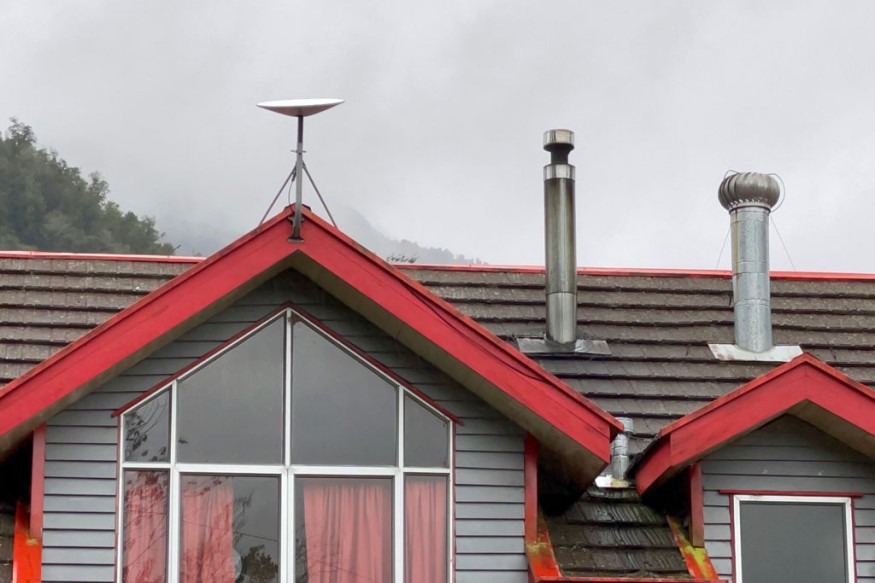SpaceX launched another Falcon 9 rocket on Saturday, three days after transporting four people to the International Space Station. They're bringing 53 additional Starlink satellites into the constellation of space-based internet relay stations that the business is building. Elon Musk's company also unveiled a new user dish that is smaller and rectangular and can link to satellites.
During the launch, the rocket's first stage engines ignited at 7:19 a.m. ET. The spacecraft throttled up to full power and successfully launched the booster away from pad 40 at the Cape Canaveral Space Force Station with 1.7 million pounds of thrust, despite being one day late due to bad weather.
The giant rocket arced out to the northeast and swiftly vanished from view as it ascended out of low fog in a dramatic manner. On its ninth mission, the first stage dropped away and landed on an offshore drone ship two and a half minutes later, while the second stage went on to orbit.

SpaceX Deploys More Than 50 Starlink Satellites for Internet Constellation
Space.com said that the launch attempt came only 24 hours after SpaceX was forced to postpone its launch due to bad weather at Cape Canaveral. The launch location was shrouded in dense fog when the sun rose on Saturday morning. Still, it gradually evaporated as the day progressed. The rocket was hardly visible on the launchpad. Still, as it jumped off the pad and into the sky, it was perfectly apparent against the azure skies.
The flawless liftoff was the first SpaceX Starlink launch from Florida in six months, using one of the company's 70-meter (229-foot) tall Falcon 9 workhorses. In September, SpaceX launched a Starlink mission from its launch site in California.
The business attributed the pause in Starlink launches to introducing new satellites with laser-based technologies that allow them to interact with one other in orbit rather than with the ground. The rocket's first stage returned to Earth around nine minutes after liftoff, landing successfully on SpaceX's drone ship Just Read the Instructions.
SpaceX Starlink Unveils New Smaller, Rectangular User Dish to Connect to Satellites
Meanwhile, The Verge said SpaceX had shown a new rectangular dish that prospective Starlink customers might purchase to access the company's expanding low-Earth-orbit satellite constellation. It's a lighter and thinner version of the circular dish that Starlink beta testers have been using for the past year.
Starlink is SpaceX's satellite internet project, with the goal of launching approximately 12,000 satellites into low-Earth orbit to give broadband internet access to people on the ground, particularly in isolated and rural places where traditional internet infrastructure is weak. With so many satellites in low orbit simultaneously, the goal is to have at least one satellite visible over every part of the globe, giving consumers near-constant internet connectivity. Users must install a dish someplace near their house, such as on the roof, with an unobstructed view of the sky (free of trees) at all times to connect to the system.
FCC Approves Starlink's New Satellite Dish
SpaceX has just gotten permission from the Federal Communications Commission for a new proposal for a smaller dish. The 12-inch breadth is noticeably similar to the dimensions of the antenna that Project Kuiper, a competing internet satellite venture, is trying to create. Project Kuiper stated when it presented their antenna that it would lower the entire cost of manufacturing the equipment. In August, SpaceX president Gwynne Shotwell said that the company's new dishes would be far more cost-effective.
According to PCMag, Shotwell that the ones they will have later this year would be around half the price of our existing user terminals. Originally, the Starlink dishes cost SpaceX $3,000 apiece to manufacture, implying that the corporation was selling them at a loss to consumers. In April, though, Shotwell reported that SpaceX had lowered that figure to roughly $1,300.
The company's website said the rectangular dish comes with a new 3 x 3 MU-MIMO router that does not have a built-in ethernet connector like its predecessor. However, for individuals who want to connect their gadgets through cords, SpaceX sells an ethernet adaptor.
Those who purchase the rectangular dish also appear to have more accessory options for installing the equipment in their home. A new installation guide depicts new sorts of poles that attach to the sides of houses and a long vertical pole that users may insert into their yards' ground. This alternative "takes digging," according to the dish accessory instructions.
RELATED ARTICLE : Experts Reveal That 3% Of SpaceX's Starlink Satellites Have Failed In Orbit So Far
Check out more news and information on Starlink in Science Times.












